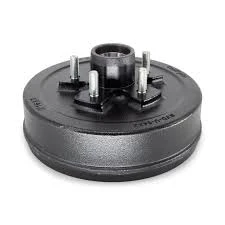
-
 Afrikaans
Afrikaans -
 Albanian
Albanian -
 Amharic
Amharic -
 Arabic
Arabic -
 Armenian
Armenian -
 Azerbaijani
Azerbaijani -
 Basque
Basque -
 Belarusian
Belarusian -
 Bengali
Bengali -
 Bosnian
Bosnian -
 Bulgarian
Bulgarian -
 Catalan
Catalan -
 Cebuano
Cebuano -
 Corsican
Corsican -
 Croatian
Croatian -
 Czech
Czech -
 Danish
Danish -
 Dutch
Dutch -
 English
English -
 Esperanto
Esperanto -
 Estonian
Estonian -
 Finnish
Finnish -
 French
French -
 Frisian
Frisian -
 Galician
Galician -
 Georgian
Georgian -
 German
German -
 Greek
Greek -
 Gujarati
Gujarati -
 Haitian Creole
Haitian Creole -
 hausa
hausa -
 hawaiian
hawaiian -
 Hebrew
Hebrew -
 Hindi
Hindi -
 Miao
Miao -
 Hungarian
Hungarian -
 Icelandic
Icelandic -
 igbo
igbo -
 Indonesian
Indonesian -
 irish
irish -
 Italian
Italian -
 Japanese
Japanese -
 Javanese
Javanese -
 Kannada
Kannada -
 kazakh
kazakh -
 Khmer
Khmer -
 Rwandese
Rwandese -
 Korean
Korean -
 Kurdish
Kurdish -
 Kyrgyz
Kyrgyz -
 Lao
Lao -
 Latin
Latin -
 Latvian
Latvian -
 Lithuanian
Lithuanian -
 Luxembourgish
Luxembourgish -
 Macedonian
Macedonian -
 Malgashi
Malgashi -
 Malay
Malay -
 Malayalam
Malayalam -
 Maltese
Maltese -
 Maori
Maori -
 Marathi
Marathi -
 Mongolian
Mongolian -
 Myanmar
Myanmar -
 Nepali
Nepali -
 Norwegian
Norwegian -
 Norwegian
Norwegian -
 Occitan
Occitan -
 Pashto
Pashto -
 Persian
Persian -
 Polish
Polish -
 Portuguese
Portuguese -
 Punjabi
Punjabi -
 Romanian
Romanian -
 Russian
Russian -
 Samoan
Samoan -
 Scottish Gaelic
Scottish Gaelic -
 Serbian
Serbian -
 Sesotho
Sesotho -
 Shona
Shona -
 Sindhi
Sindhi -
 Sinhala
Sinhala -
 Slovak
Slovak -
 Slovenian
Slovenian -
 Somali
Somali -
 Spanish
Spanish -
 Sundanese
Sundanese -
 Swahili
Swahili -
 Swedish
Swedish -
 Tagalog
Tagalog -
 Tajik
Tajik -
 Tamil
Tamil -
 Tatar
Tatar -
 Telugu
Telugu -
 Thai
Thai -
 Turkish
Turkish -
 Turkmen
Turkmen -
 Ukrainian
Ukrainian -
 Urdu
Urdu -
 Uighur
Uighur -
 Uzbek
Uzbek -
 Vietnamese
Vietnamese -
 Welsh
Welsh -
 Bantu
Bantu -
 Yiddish
Yiddish -
 Yoruba
Yoruba -
 Zulu
Zulu
Exploring the Inner Mechanics of a Brake Drum System
Inside a Brake Drum Understanding Its Function and Importance
When we think about the mechanics of a vehicle, the intricacies often lie beneath the surface. One of the vital components in the braking system is the brake drum. Understanding what happens inside a brake drum can shed light on its importance for safe driving and effective vehicle performance.
A brake drum is a cylindrical component that houses the braking mechanism, commonly found in drum brake systems. When the driver presses the brake pedal, hydraulic pressure is generated in the brake lines, causing the brake shoes—an internal component—to expand outward against the inner surface of the drum. This friction between the shoes and the drum is what slows down or stops the vehicle.
Inside the brake drum, various materials come into play. The drum itself is often made from cast iron or aluminum, providing durability and heat resistance. The brake shoes are typically lined with a friction material, which allows for effective stopping power without damaging the drum surface. This friction material is crucial; it needs to withstand high temperatures generated during braking while providing consistent performance.
inside a brake drum

As the brake system engages, several physical phenomena occur. The rapid heating of the drum due to friction can lead to thermal expansion, which must be managed to prevent brake fade—a reduction in stopping power due to overheating. Therefore, ventilation holes or slots are sometimes engineered into the drum to allow heat dissipation and maintain optimal performance.
The maintenance of brake drums is critical to vehicle safety. Over time, wear and tear can lead to the need for adjustments or replacements. Mechanics often inspect the drum for warping or scoring, which can compromise braking efficiency. Regular checks ensure that the brake shoes maintain contact with the drum and that there is no excessive clearance that could reduce effectiveness.
In conclusion, the brake drum may seem like a simple component, but its function is crucial to the overall safety of a vehicle. It not only facilitates efficient stopping through the use of friction but also requires careful consideration regarding maintenance and design to ensure longevity and reliability. Understanding the mechanics inside a brake drum empowers drivers to appreciate the complexities of their vehicles and underscores the importance of regular vehicle maintenance for safe driving experiences.
-
What Are Drum BrakesNewsJul.07,2025
-
Understanding Brake Drum MaterialNewsJul.07,2025
-
Semi-Trailer Brake Drum: A Key Component for Extreme Loads and Long-Distance TransportNewsJul.07,2025
-
Drum Brake Pads for SaleNewsJul.07,2025
-
Brake Drums for SaleNewsJul.07,2025
-
Brake Drum ManufacturerNewsJul.07,2025
-
Aluminum Brake Drums: The Future of High-Performance CarsNewsJul.07,2025
